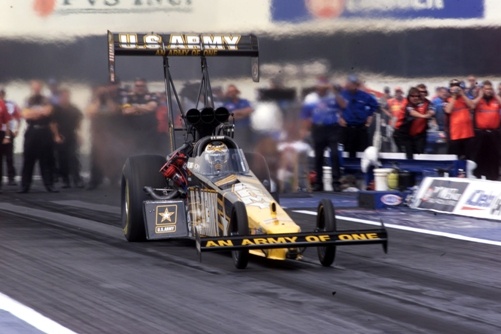| Composition Setup |
|---|
| Excerpt | ||
|---|---|---|
| ||
Explore the kinematics of constant power (as opposed to constant force). |
Photo by Lt. Col. Derik Crotts, courtesy of U.S. Army |
...
Top-fuel
...
dragsters
...
like
...
the
...
one
...
shown
...
above
...
accelerate
...
from
...
rest
...
at
...
a
...
tremendous
...
rate.
...
They
...
race
...
on
...
a
...
straight
...
1/4
...
mile
...
long
...
track.
...
From
...
a
...
standing
...
start,
...
they
...
complete
...
the
...
quarter
...
mile
...
in
...
about
...
4.5
...
seconds
...
and
...
reach
...
a
...
speed
...
of
...
about
...
330
...
mph
...
by
...
the
...
finish line.
| Deck of Cards | |||||||||||||||||||||||||||||||||||||||||||||||||||||||||||||||||||||||||||||||||||||
|---|---|---|---|---|---|---|---|---|---|---|---|---|---|---|---|---|---|---|---|---|---|---|---|---|---|---|---|---|---|---|---|---|---|---|---|---|---|---|---|---|---|---|---|---|---|---|---|---|---|---|---|---|---|---|---|---|---|---|---|---|---|---|---|---|---|---|---|---|---|---|---|---|---|---|---|---|---|---|---|---|---|---|---|---|---|
| |||||||||||||||||||||||||||||||||||||||||||||||||||||||||||||||||||||||||||||||||||||
|
